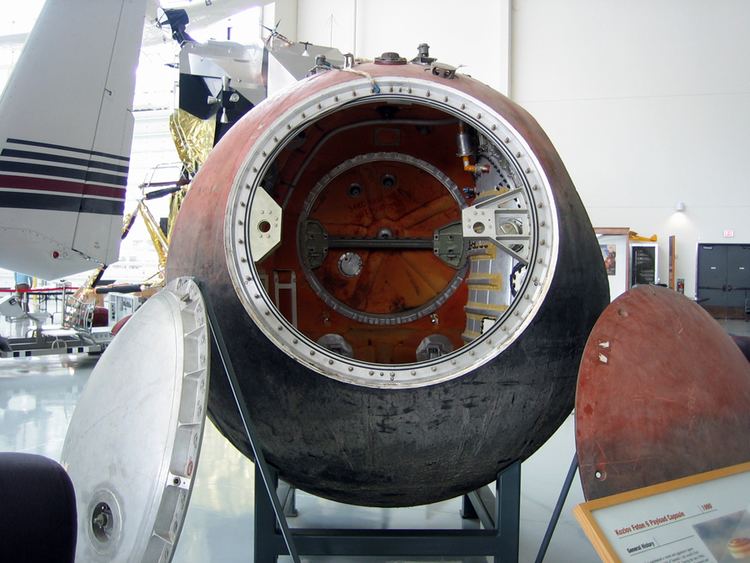 | ||
Foton (or Photon) is the project name of two series of Russian science satellite and reentry vehicle programs. Although unmanned, the design was adapted from the manned Vostok spacecraft capsule. The primary focus of the Foton project is materials science research, but some missions have also carried experiments for other fields of research including biology. The original Foton series included 12 launches from the Plesetsk Cosmodrome from 1985 to 1999. The second series, under the name Foton-M, incorporates many design improvements over the original Foton, and is still in use. So far, there have been four launch attempts of the Foton-M. The first was in 2002 from the Plesetsk Cosmodrome, which ended in failure due to a problem in the launch vehicle. The last three were from the Baikonur Cosmodrome, in 2005, 2007, and 2014; all were successful. Both the Foton and Foton-M series used Soyuz-U (11A511U and 11A511U2) rockets as launch vehicles. Starting with the Foton-7 mission, the European Space Agency has been a partner in the Foton program.
Contents
Foton-M
Foton-M is a new generation of Russian robotic spacecraft for research conducted in the microgravity environment of Earth orbit. The Foton-M design is based on the design of the Foton, with several improvements including a new telemetry and telecommand unit for increased data flow rate, increased battery capacity, and a better thermal control system. It is produced by TsSKB-Progress in Samara.
The first launch, of Foton-M1, failed because of a malfunction of the Soyuz-U launcher. The second launch, of Foton-M2, was, however, a success. Foton-M3 was launched on 14 September 2007 carried by a Soyuz-U rocket lifting off from the Baikonur Cosmodrome in Kazakhstan with Nadezhda, a cockroach who gave birth to the first earthlings known to have been born in space. It returned successfully to Earth on September 26, 2007, landing in Kazakhstan at 7:58 GMT.
Reentry
The Foton capsule has limited thruster capability. As such, the reentry path and orientation can not be controlled after the capsule has separated from the engine system. This means that the capsule has to be protected from reentry heat on all sides, thus explaining the spherical design (as opposed to Project Mercury's conical design), which allows for maximum volume while minimizing the external surface. However, the lack of lift means the capsule experiences high forces on reentry, up to 8 to 9g.
